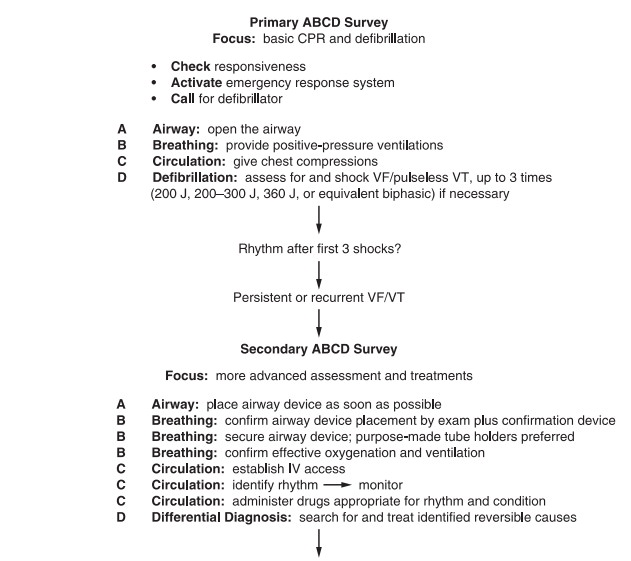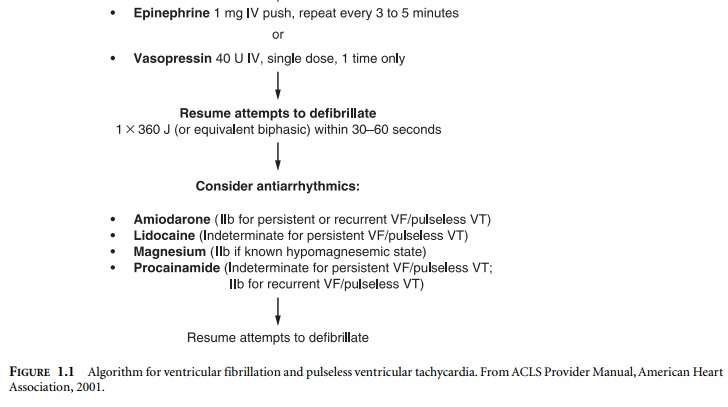Chapter: Clinical Cases in Anesthesia : Cardiopulmonary Resuscitation
What are the recommended rates of compression and ventilation?
What are
the recommended rates of compression and ventilation?
Animal models of CPR have shown that the
optimal blood flows are achieved when chest compressions are performed at
80–100 times per minute and the chest is compressed 1.5 to 2 inches (3–5 cm).
The new Guidelines for Cardiopulmonary Resuscitation published by the American
Heart Association in 2000 recommend a chest compression rate of 100 times per
minute. The proportion of time spent during the compression phase should be 50%
of the relaxation phase.
Artificial ventilation is preferentially given
by endotra-cheal tube (ETT) at a rate of 10–12 breaths per minute.
Nevertheless, the new ACLS guidelines de-emphasize endo-tracheal intubation
during CPR due to a high incidence of incorrectly placed ETTs. Mask ventilation
or alternative air-ways, such as the laryngeal mask or the esophageal-tracheal
Combitube, may be preferable in situations where the rescuer is not properly
trained or skilled in ETT placement. It is now mandatory to confirm correct ETT
placement by both physical examination and a secondary device, such as
capnography, a colorimetric carbon dioxide (CO2) detector, or an
esophageal detector device. During two-person CPR, ventilation in the intubated
patient should be performed with every fifth compression. With an unprotected
airway or during one-rescuer CPR the compression to ventilation


Each breath should take about 2
seconds and should make the chest rise clearly. Animal studies demon-strate
higher cerebral perfusion pressures when ventilation occurs simultaneously with
compressions. However, improved survival has not been demonstrated in humans,
and this technique is not recommended.
Related Topics